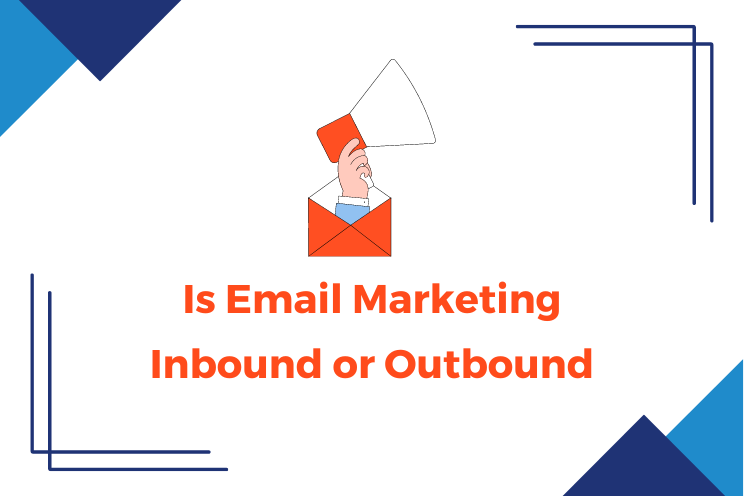Here’s the deal: if you’re confused about whether email marketing is inbound or outbound, you’re not alone. The truth is, it can be both.
Email marketing is a versatile tool that can fit into either category, depending on how you use it. But you can’t just slap it into one category and call it a day. Understanding where email marketing fits in your strategy is crucial for maximizing its effectiveness.
So, let’s break it down and figure out where email marketing belongs in your playbook.

What is Inbound Marketing?
Inbound marketing is all about attraction. It’s about pulling customers in by creating content and experiences that are valuable to them. Think of it as a magnet—drawing in your audience through quality content, SEO, social media engagement, and personalized experiences.
You’re not shouting at your customers; you’re engaging with them in a way that makes them want to come to you. Inbound marketing is subtle but powerful, and it’s all about building trust and credibility over time.
What is Outbound Marketing?
Outbound marketing is the opposite of inbound. Instead of pulling customers in, you’re pushing your message out to them. This is the more traditional form of marketing – think TV ads, billboards, cold calls, and direct mail.
You’re reaching out to potential customers, often interrupting their day, in hopes of capturing their attention. Outbound marketing is more aggressive, aiming to reach a wide audience quickly. It’s less about building relationships and more about generating immediate awareness and responses.
Email Marketing as an Inbound Strategy
So where does email marketing fit in? When used as an inbound strategy, email marketing is about nurturing relationships and providing value.
Permission-Based Email Marketing
Inbound email marketing starts with permission. When someone subscribes to your newsletter or signs up for updates, they’re giving you permission to enter their inbox. This permission is gold because it means they’re already interested in what you have to offer.
Your job is to keep them interested by providing content that’s relevant, helpful, and engaging. This isn’t about the hard sell; it’s about building a relationship over time.
Content Delivery and Lead Nurturing
One of the key roles of email marketing in an inbound strategy is delivering content that nurtures leads. Whether it’s a weekly newsletter, blog updates, or educational resources like eBooks and webinars, your emails should serve as a tool to keep your audience engaged.
The goal is to move them further down the sales funnel, from interested prospects to loyal customers. By consistently providing value, you build trust and credibility, which makes the eventual sale much easier.
Email Marketing as an Outbound Strategy
Email marketing can also be an effective outbound strategy, particularly when you’re trying to reach new prospects.
Cold Emailing and Outreach
Outbound email marketing is most commonly seen in cold emailing. This is when you reach out to potential customers or partners who haven’t interacted with your brand before. Cold emailing is a bit like cold calling, but less intrusive and more scalable. It’s often used in B2B marketing to initiate contact with key decision-makers. The challenge with cold emailing is to make your message relevant and personalized, so it doesn’t come off as spammy. When done right, cold emailing can open doors to new business opportunities.
Direct Response Campaigns
Another way email marketing serves as an outbound strategy is through direct response campaigns. These are emails sent to a broad audience with the goal of generating an immediate response. Whether it’s a limited-time offer, a product launch, or a flash sale, these emails are designed to drive action. Outbound email campaigns often rely on creating a sense of urgency, making the recipient feel like they need to act now.
Integrating Email Marketing in a Hybrid Approach
Why choose between inbound and outbound? The most effective email marketing strategies often combine both.
Combining Inbound and Outbound Strategies
A hybrid approach allows you to capture leads through outbound tactics like cold emailing, and then nurture those leads through inbound tactics like content delivery. For example, you might start by sending a cold email offering a free eBook.
Once a prospect downloads the eBook, they enter your inbound funnel, where they receive a series of emails designed to educate and engage them further. This way, you’re not just throwing out a net and hoping for the best—you’re creating a structured path that guides prospects from initial contact to conversion.
Automated Workflows
Automation tools are a game-changer for integrating inbound and outbound email marketing. With automated workflows, you can set up sequences that trigger based on a prospect’s behavior.
For example, after someone responds to a cold email, they can automatically start receiving a series of nurturing emails tailored to their interests. This seamless integration ensures that your emails are always timely and relevant, without you having to manually send each one.
Case Studies: Email Marketing in Inbound and Outbound Strategies
To see these strategies in action, let’s look at some real-world examples.
Inbound Email Marketing Success
A SaaS company used inbound email marketing to nurture leads who signed up for a free trial. They created an automated email sequence that provided tips, case studies, and testimonials. This not only helped users get the most out of the trial but also built trust in the product.
As a result, the company saw a 30% increase in trial-to-paid conversions. This case highlights how consistent, value-driven communication can turn interested prospects into paying customers.
Outbound Email Marketing Success
On the other hand, a B2B company successfully used outbound email marketing through cold emailing. They targeted decision-makers in their industry with personalized messages that addressed specific pain points.
By focusing on relevance and personalization, they achieved a 20% response rate, leading to several high-value contracts. The takeaway? Even in a cold outreach scenario, understanding your audience and crafting a message that resonates can lead to significant results.
Conclusion
So, is email marketing inbound or outbound? The answer is both, depending on how you use it. When you’re nurturing leads and building relationships, it’s inbound. When you’re reaching out cold or driving immediate action, it’s outbound. But don’t feel like you have to choose one over the other.
The most successful strategies often combine both, creating a balanced approach that captures leads, nurtures them, and drives conversions.
